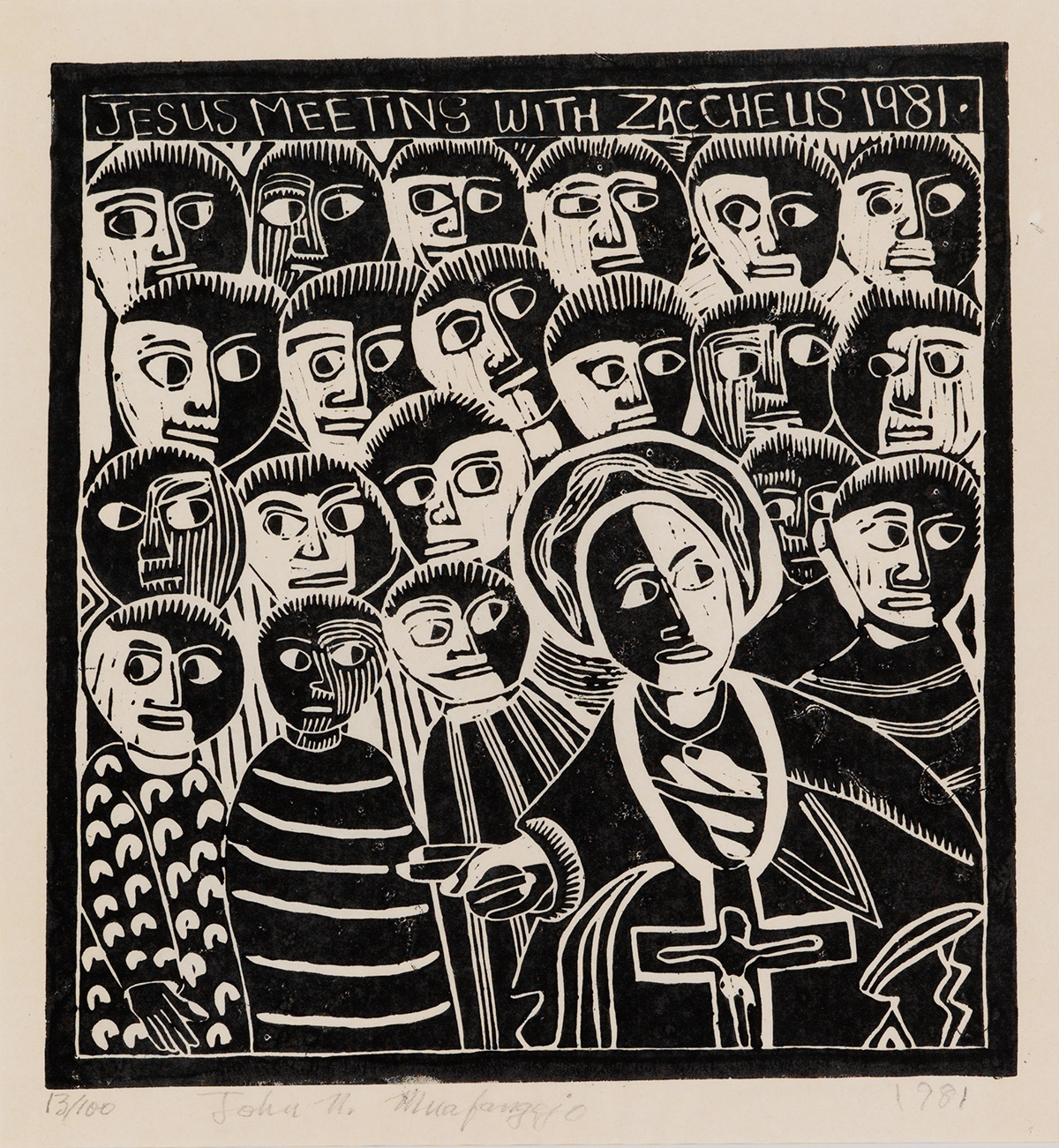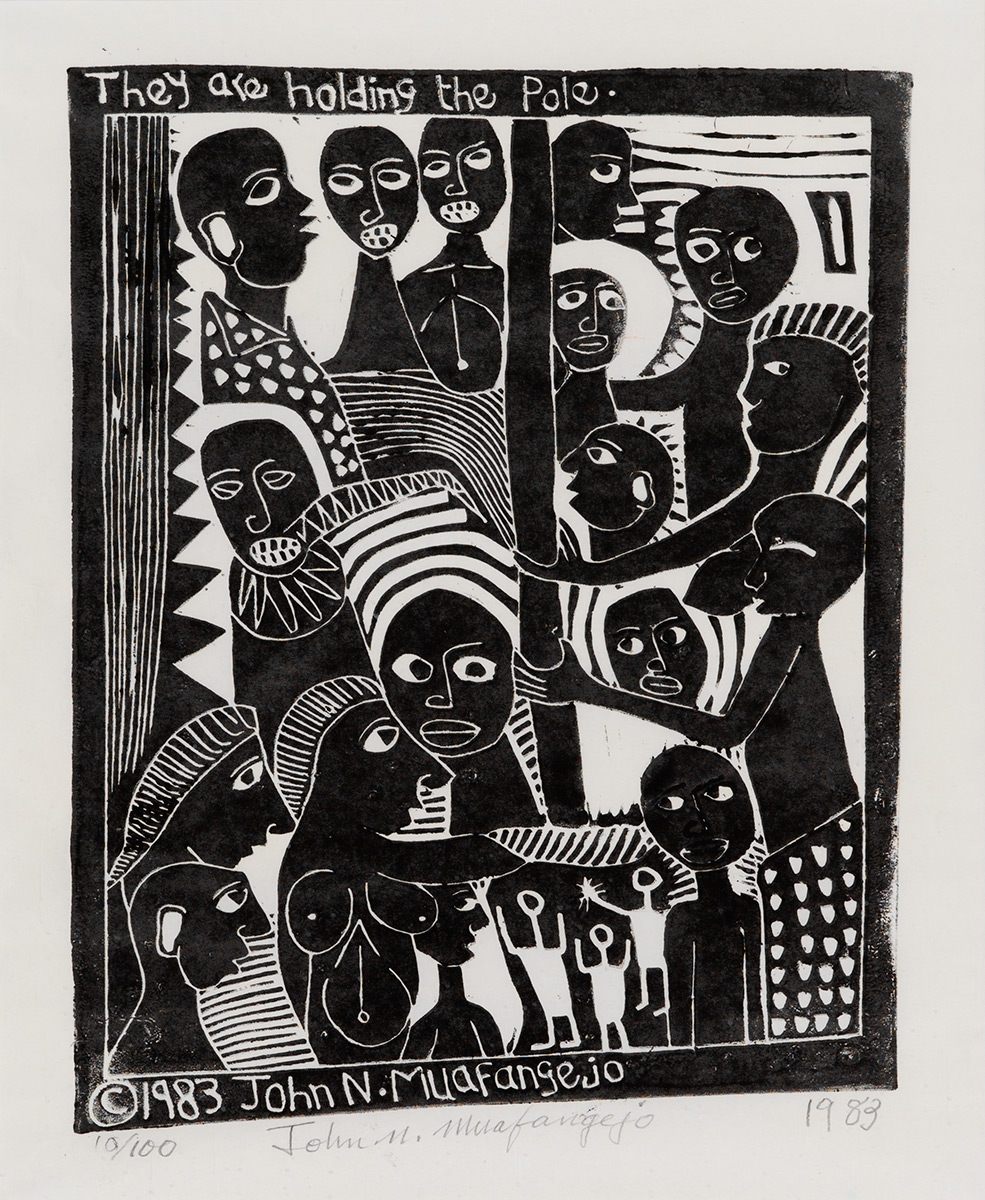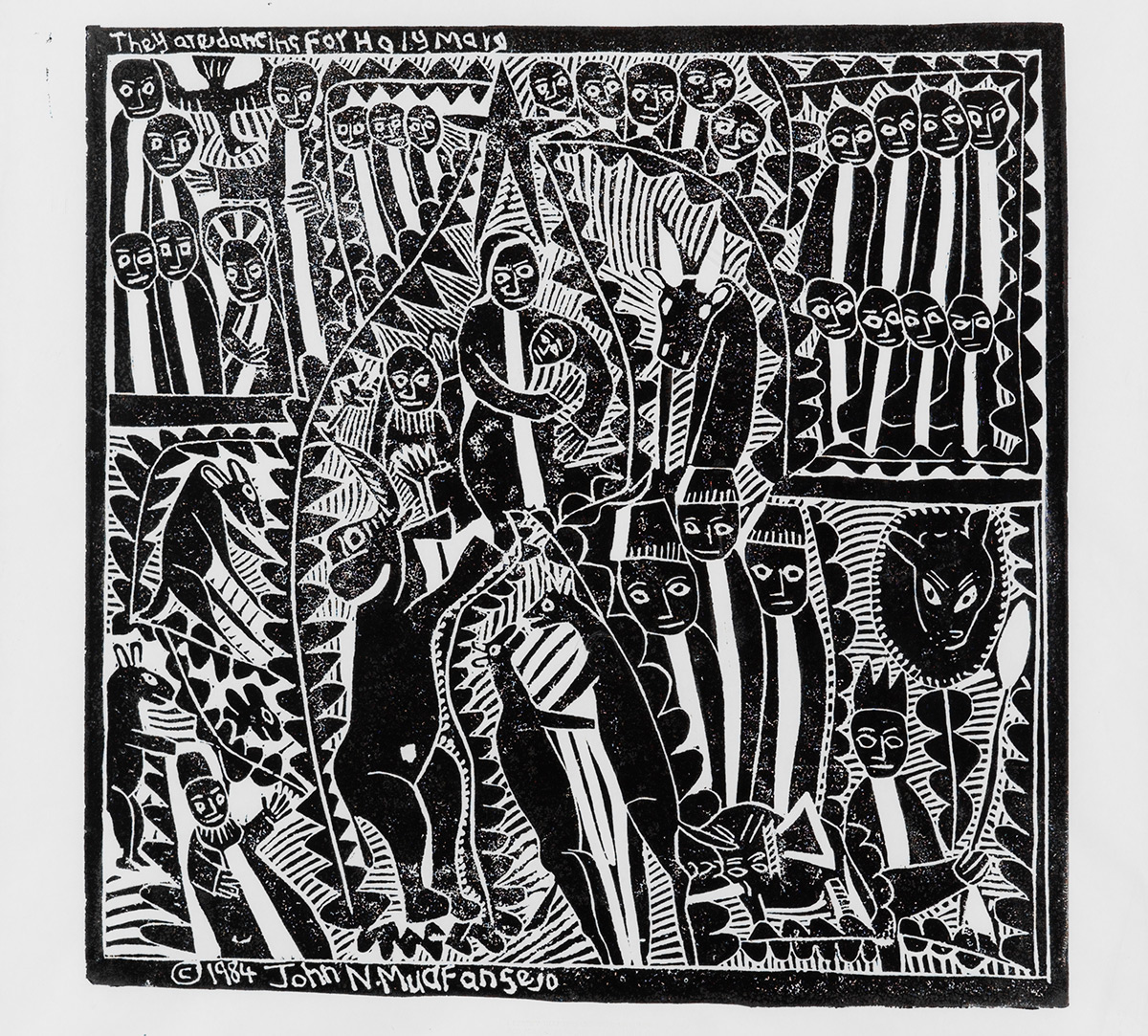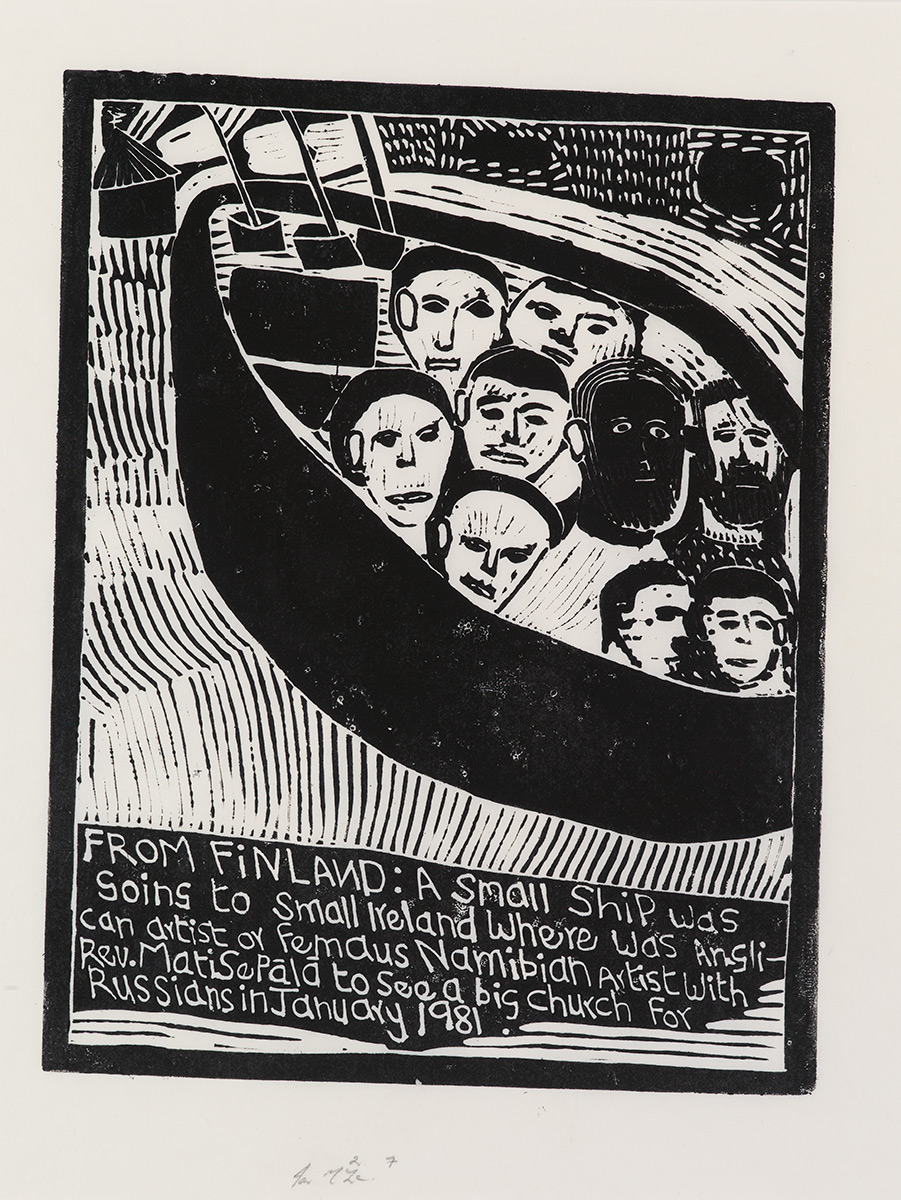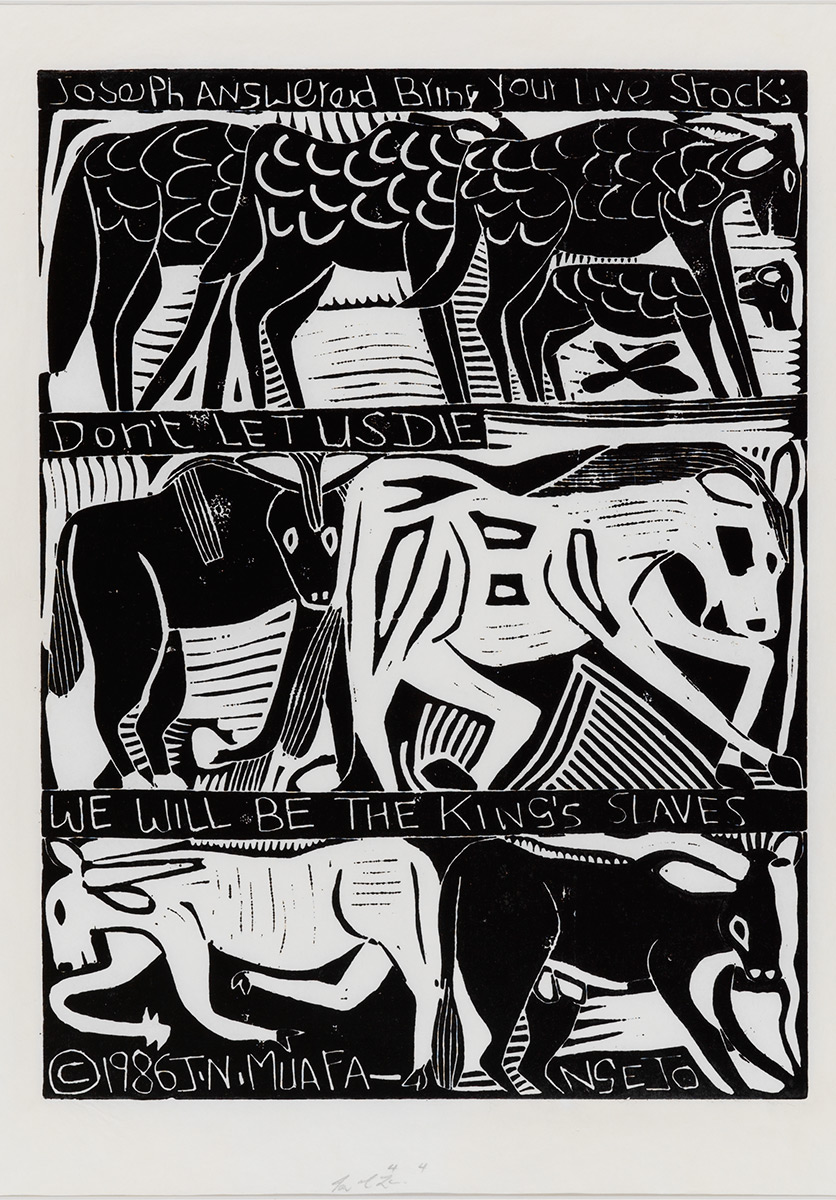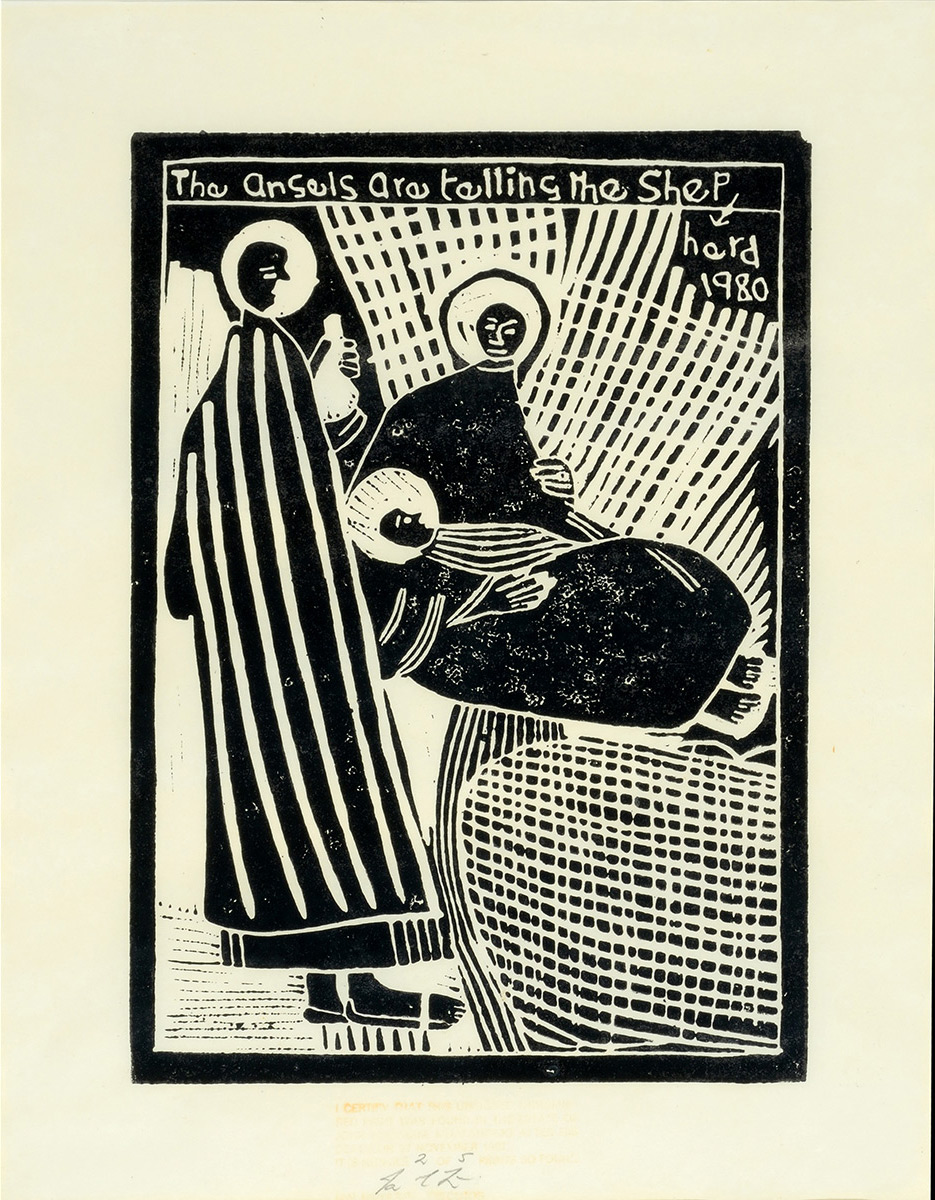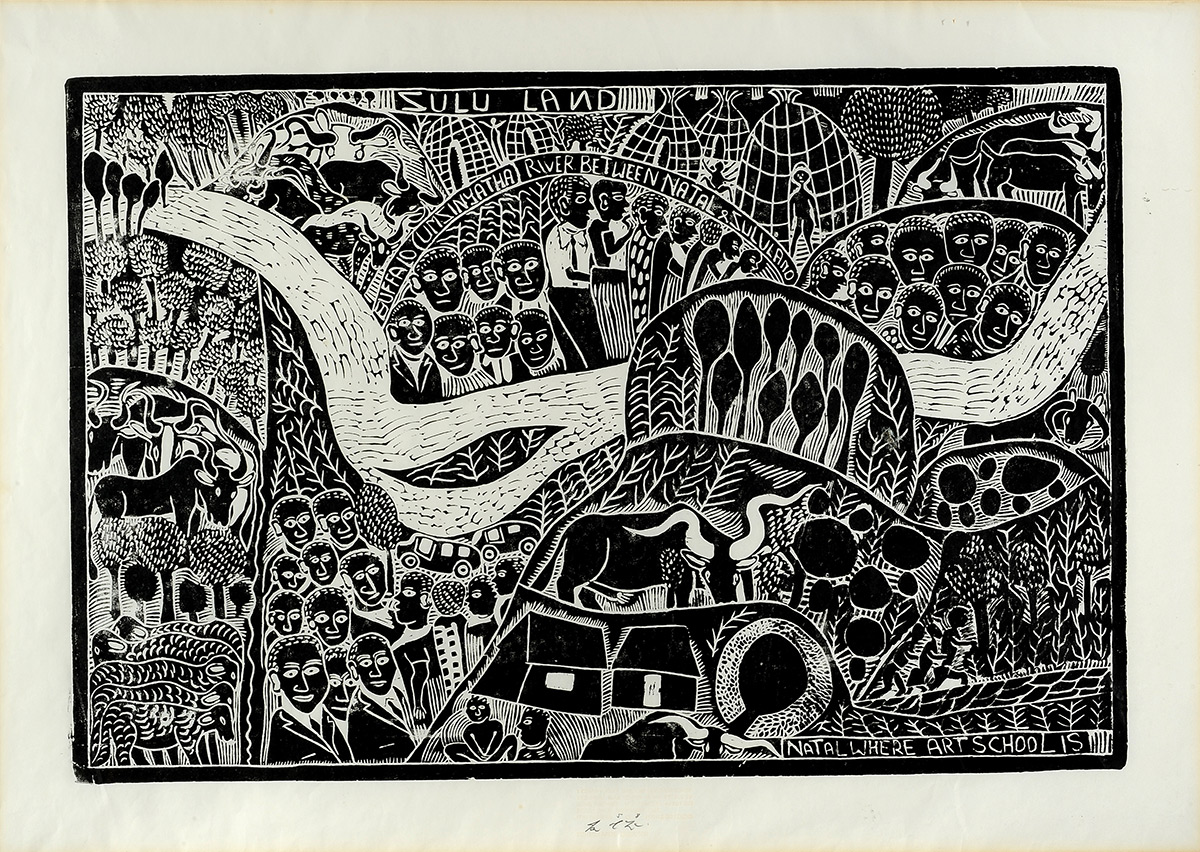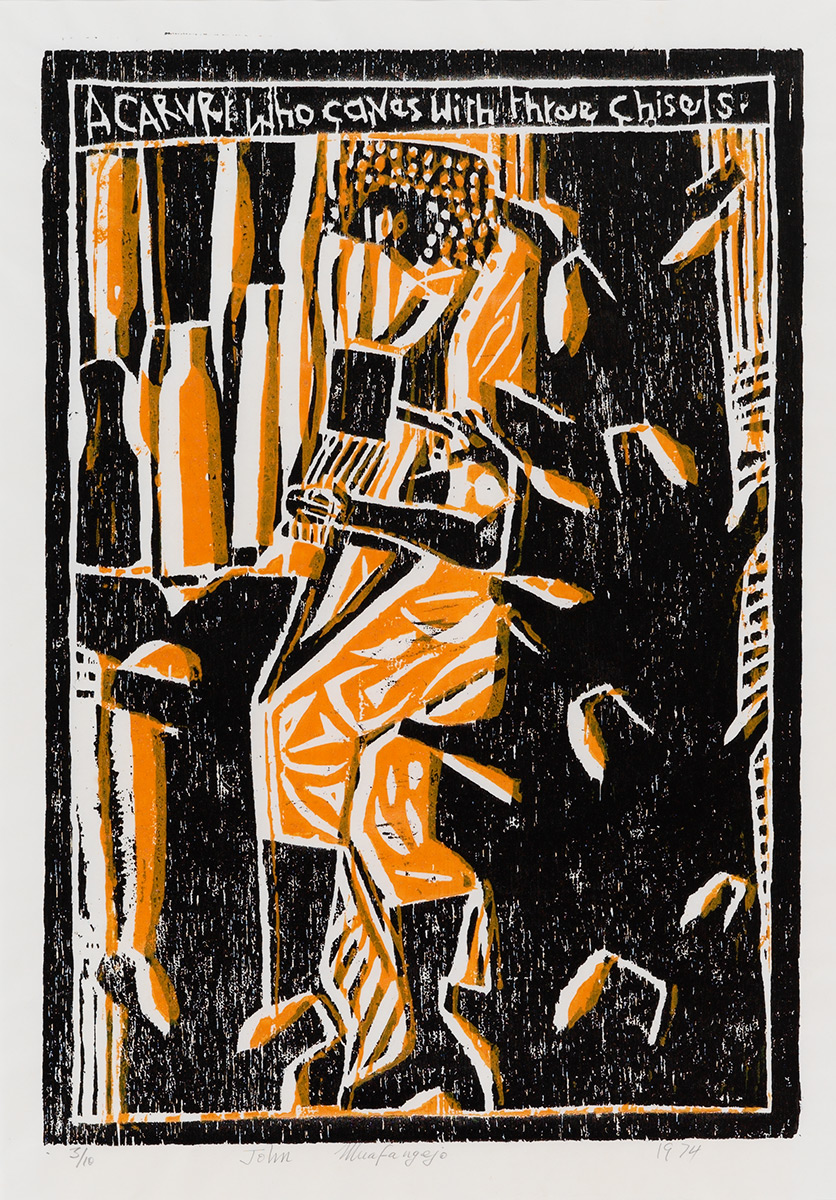John Ndevasia MUAFANGEJO (1943 – 1987)
BIOGRAPHY
John Ndevasia Muafangejo is considered one of the most important visual artists of his generation. His linocuts are powerful depictions of people and events, expressed in black and white imagery. He often combines text with images, and his images contain references to the history and culture of the ovaKwanyama, a traditional kingdom of the Ovambo people in what is today northern Namibia and southern Angola. He did not live to see the independence of Namibia, but the violent struggle for it formed the background for his art.
Muafangejo was born in Etunda lo Nghadi, Ovamboland, Angola. In 1957, he moved to join his mother at the Anglican mission station at Epinga in South West Africa (now Namibia), where he began his formal education.
At 20, he moved to the Onamunhama Holy Cross Mission School, then to Saint Mary’s Anglican Mission in Odibo, where his talent was recognised by Father Mallory who helped him with his application to study Art and Craft Centre of the Evangelical Lutheran Church at Rorke’s Drift, beginning in 1967.
The Rorke’s Drift Art and Craft Centre was founded in 1962 by the Swedish couple Ulla and Peder Gowenius and played a significant role in the development of South African art in the second half of the 20th century. Here Muafangejo came into contact with different artistic techniques, such as weaving, woodcarving, painting and pottery. One of his teachers was Azaria Mbatha. He distinguished himself particularly in etching and linocut.
In 1968, he suffered a nervous breakdown and was admitted to Madadeni hospital, Newcastle, where he treated for nervous exhaustion, but he returned to Rorke’s Drift and completed his course within the prescribed two years.
From 1970 to 1974, he taught art at the mission school in Odibo.
In 1974, he was invited back to Rorke’s Drift as an artist-in-residence.
Muafangejo returned to Ovambo in 1976. The same year, a collection of his prints, selected by Walter Battiss, was published.
In 1977, Muafangejo moved to Windhoek. During 1986 and 1987, he built a small house for himself in Katutura township.
In 1987, he was selected as the Guest Artist for the 1988 Standard Bank National Arts Festival. But he died suddenly, late on 27 November 1987.
His work was exhibited widely at spaces including Camden Arts Centre, London (1969), The São Paulo Biennial (1972), The Arts Centre, Durban (1975), The Brooklyn Museum, New York (1976), the Bullankulma Art Gallery, Helsinki (1980), The IFA Gallery, Bonn, Germany (1987) and the National Arts Festival, Grahamstown (now Makhanda) (1988).
The Namibian Arts Association in Windhoek has a large collection of his works in their Permanent Collection.


